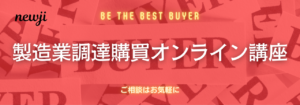- お役立ち記事
- Contact angle measurement method and precautions

Contact angle measurement method and precautions

目次
Understanding Contact Angle Measurement
Contact angle measurement is a technique used to determine the wettability of a surface.
This method involves measuring the angle where a liquid drop meets a solid surface.
By understanding the contact angle, you can infer how a liquid spreads, adheres, or interacts with a surface.
This process is essential in various fields such as material science, chemistry, and even in industries like painting and printing.
The contact angle provides insight into the surface energy of a material.
A low contact angle indicates high wettability, suggesting the liquid spreads out across the surface.
A high contact angle signifies low wettability, where the liquid tends to bead up.
Methods of Measuring Contact Angle
There are several techniques to measure contact angles, each with its pros and cons.
One common method is the sessile drop technique.
In this approach, a droplet of liquid is placed on a flat solid surface, and the angle is measured using a goniometer.
This method is straightforward and widely used for its simplicity.
Another technique is the captive bubble method.
This involves placing an air bubble beneath a submerged surface.
The contact angle is determined by observing the liquid surrounding the bubble.
This technique is advantageous for understanding how surfaces interact under liquid, such as underwater coatings.
The tilting plate method is used when dynamic contact angles are required.
In this method, contact angles are measured as the surface is tilted, allowing for the observation of advancing and receding contact angles.
It helps in understanding the hysteresis effect – the difference between these two angles.
Factors Influencing Contact Angle Measurement
Measuring contact angles is influenced by several factors, each affecting the final results.
Surface roughness plays a vital role.
A rough surface can have higher contact angles due to the increased surface area in contact with the liquid droplet.
Conversely, smooth surfaces tend to have lower contact angles.
The nature of the surface material also affects the measurement results.
Hydrophobic materials repel water, resulting in higher contact angles.
In contrast, hydrophilic surfaces attract water, lowering the contact angle.
Environmental conditions, such as temperature and humidity, can impact the measurement.
Higher temperatures may lower the contact angle by reducing liquid viscosity, allowing it to spread more easily.
Humidity can influence the moisture on a surface, altering the way a liquid interacts with it.
Importance of Contact Angle Measurement
Contact angle measurement is critical in various applications.
In the pharmaceutical industry, understanding how powders interact with liquids can affect drug formulation and delivery.
Contact angle measurements provide essential data on wettability, which influences drug solubility and absorption.
In the automotive sector, knowing the wettability of car paint can enhance adhesion and durability.
This ensures that the paint remains robust against environmental factors, maintaining its appearance over time.
Additionally, in the textile industry, understanding fabric wettability can enhance fabric performance.
It’s crucial for waterproof clothing, where high contact angles are preferred to prevent water penetration.
Precautions When Measuring Contact Angles
To ensure accurate contact angle measurements, several precautions must be taken.
Firstly, ensure that the surface is clean and free from contaminants.
Dirt, oil, or residues can skew results, leading to inaccurate interpretations.
Calibration of equipment, such as the goniometer, must be conducted regularly.
Proper calibration ensures that the measurements are precise and reliable.
Use a controlled environment to minimize external factors affecting the measurement.
Stable temperature and humidity conditions lead to consistent and accurate readings.
It’s also important to use the same type of liquid for comparison purposes.
Different liquids have varying surface tensions, affecting the contact angle measurements.
Using a consistent liquid helps in comparing results accurately across different surfaces.
Conclusion
Contact angle measurement is a vital tool in understanding surface wettability and interaction.
By comprehensively understanding the methods, factors, and precautions involved in contact angle measurement, industries can optimize processes and develop better products, enhancing performance and effectiveness.
Whether it’s improving paints, fabrics, or pharmaceutical products, mastering this technique opens doors to innovation and quality enhancement.
 資料ダウンロード
資料ダウンロード
QCD管理受発注クラウド「newji」は、受発注部門で必要なQCD管理全てを備えた、現場特化型兼クラウド型の今世紀最高の受発注管理システムとなります。
 NEWJI DX
NEWJI DX
製造業に特化したデジタルトランスフォーメーション(DX)の実現を目指す請負開発型のコンサルティングサービスです。AI、iPaaS、および先端の技術を駆使して、製造プロセスの効率化、業務効率化、チームワーク強化、コスト削減、品質向上を実現します。このサービスは、製造業の課題を深く理解し、それに対する最適なデジタルソリューションを提供することで、企業が持続的な成長とイノベーションを達成できるようサポートします。
 製造業ニュース解説
製造業ニュース解説
製造業、主に購買・調達部門にお勤めの方々に向けた情報を配信しております。
新任の方やベテランの方、管理職を対象とした幅広いコンテンツをご用意しております。
 お問い合わせ
お問い合わせ
コストダウンが利益に直結する術だと理解していても、なかなか前に進めることができない状況。そんな時は、newjiのコストダウン自動化機能で大きく利益貢献しよう!
(β版非公開)




